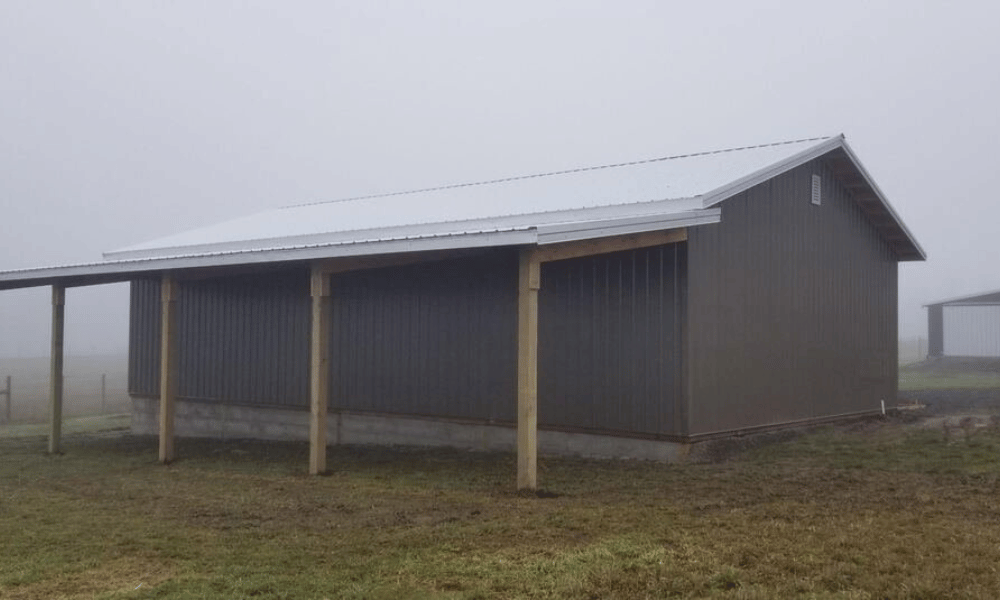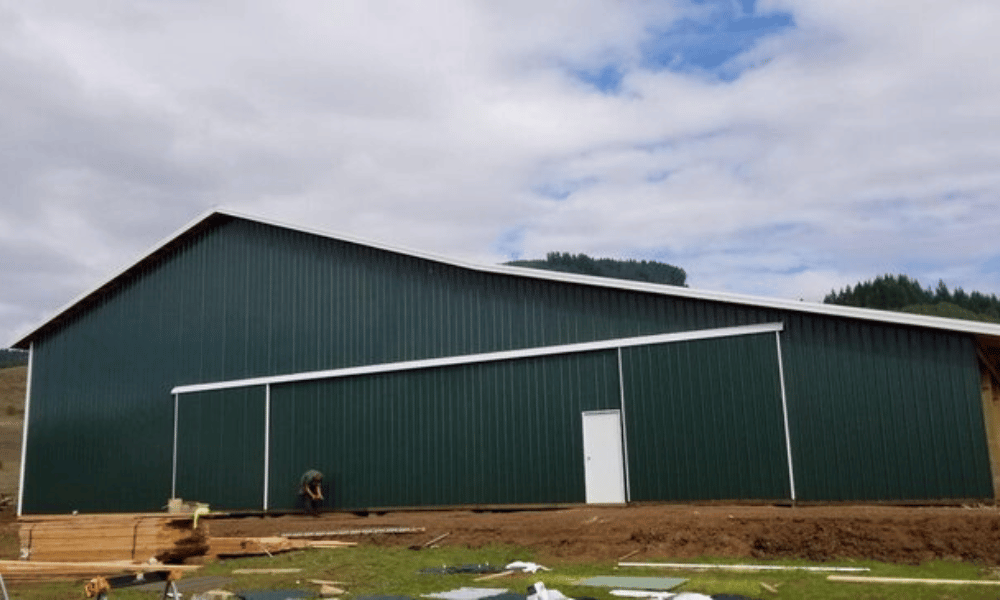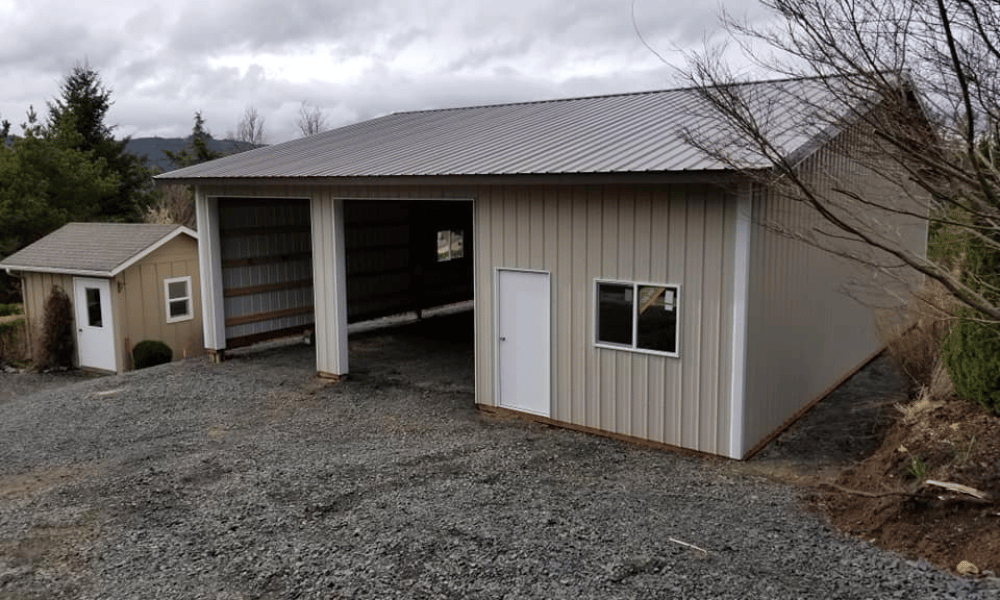Introduction
In today's fast-paced world, creating a comfortable workspace is not just a luxury—it's a necessity. Many people are turning to pole barns as unique solutions for their offices, workshops, or even creative spaces. But how does one ensure that these structures provide the comfort and functionality needed? The answer lies in insulation. In this article, we will delve into the importance of pole barn insulation, exploring its benefits, types, installation processes, and much more. So grab a cup of coffee and let’s explore why pole barn insulation should be at the top of your list when designing your ideal workspace!

Understanding Pole Barns
What Is a Pole Barn?
A pole barn is a type of structure that uses wooden poles as its main support system. Unlike traditional buildings with concrete foundations or full framing systems, pole barns allow for flexible designs and faster construction times. They can serve various purposes—be it agricultural storage, workshops, or even cozy home offices.
Advantages of Using Pole Barns
- Cost-effective: Building a pole barn is generally less expensive than traditional construction methods. Versatility: You can design them to fit various needs—from storing farm equipment to crafting an art studio. Speedy Construction: With fewer materials required and simpler designs, you can set up your pole barn in no time.
Creating a Comfortable Workspace: The Importance of Pole Barn Insulation
Insulating your pole barn is crucial for transforming it into a comfortable workspace. Without proper insulation, temperature fluctuations can create an environment that is either too hot in summer or too cold in winter. This not only affects productivity but can also lead to health issues over time.
Why Insulation Matters
- Temperature Regulation: Proper insulation helps maintain consistent temperatures year-round. Energy Efficiency: It minimizes heating and cooling costs by reducing energy loss. Noise Reduction: Insulation also dampens sound from the outside, creating a quieter work environment.
Types of Pole Barn Insulation
Fiberglass Insulation
Fiberglass is one of the most common types of insulation used in pole barns. It comes in batts or rolls and is known for its affordability and effectiveness.
Pros:
- Cost-effective Easy to install Good thermal performance
Cons:
- Can irritate skin if not handled properly Susceptible to moisture damage
Spray Foam Insulation
Spray foam insulation provides excellent air sealing properties and high R-values per inch.
Pros:
- Superior air barrier Expands to fill gaps Moisture resistant
Cons:
- Higher cost compared to fiberglass Requires professional installation
Rigid Foam Insulation
Rigid foam boards are another viable option for insulating your pole barn.
Pros:
- High insulating value with minimal thickness Moisture resistant Lightweight and easy to handle
Cons:
- More expensive than fiberglass Not as effective against air leaks unless sealed properly
Installation Process for Pole Barn Insulation
Preparation Steps
Before you begin installing insulation in your pole barn, it's essential to prepare adequately:
Choose Your Insulation Material: Decide which type suits your needs best based on budget and requirements. Measure Your Space: Accurate measurements ensure you purchase enough material without wasting resources. Gather Tools & Materials: Common tools include utility knives, safety gear (gloves/mask), staplers (for batts), or spray equipment (for foam).Step-by-Step Installation Guide
Seal Any Gaps: Before adding insulation, make sure all gaps are sealed using caulk or spray foam. Install Vapor Barriers: A vapor barrier prevents moisture build-up within the walls. Add Your Chosen Insulation: Follow manufacturer instructions closely; whether you're rolling out batts or spray foaming, ensure complete coverage. Finish Walls with Panels or Sheathing: Protect your insulation by finishing off with drywall or plywood panels.Maintaining Your Insulated Pole Barn
Regular Checks for Damage
After installation, regular maintenance checks are critical:
Look for signs of moisture damage. Ensure that there’s no pest intrusion affecting the integrity of the insulation. Check for any degradation over time.Updating Insulation Over Time
As technology advances and new materials become available, https://www.deanlindseyconstruction.com/pole-barn-garages-and-workshops https://www.deanlindseyconstruction.com/pole-barn-carports-and-awnings pole buildings consider updating your insulation every few years for optimal performance.
The Environmental Impact of Proper Insulation in Pole Barns
Reduced Energy Consumption
By insulating your workspace effectively, you’re contributing positively to the environment by lowering energy consumption needed for heating and cooling.

Sustainable Materials Options
Many modern insulations now come from sustainable sources or contain recycled materials—offering eco-friendly options while providing excellent thermal efficiency.
FAQs About Pole Barn Insulation
1. What is the best type of insulation for my pole barn?
It depends on your specific needs! Fiberglass is popular due to its affordability; however, spray foam offers superior air sealing capabilities.
2. Can I install insulation myself?
Yes! Many homeowners choose DIY installations; however, complex systems like spray foam may require professional assistance.

3. How does poor insulation affect my workspace?
Inadequate insulation leads to fluctuating temperatures that can hinder productivity and create discomfort throughout the year.
4. How often should I check my insulated space?
At least once a year! Regular inspections help catch any potential issues before they escalate into larger problems.
5. Is investing in good quality insulation worth it?
Absolutely! Quality insulation pays off through energy savings and enhanced comfort levels over time.
6. Can I use recycled materials for insulating my pole barn?
Yes! Many modern options include recycled content while still maintaining excellent thermal performance standards!
Conclusion
Creating a comfortable workspace goes beyond selecting the right furniture or decor; it significantly hinges on proper insulation—especially when it comes to versatile structures like pole barns! By understanding different types of insulations available along with their pros and cons—and taking care during installation—you can create an inviting environment that fosters productivity while maintaining energy efficiency!
So remember this fundamental lesson on "Creating a Comfortable Workspace: The Importance of Pole Barn Insulation" as you move forward in planning your ideal workspace! Whether it's crafting art pieces or running business operations from home—a well-insulated pole barn has got you covered!
This comprehensive guide aims at ensuring both new buyers and seasoned owners understand how vital proper insulating techniques are concerning their investments into future-proofing their workspaces with respect towards sustainability practices too! If you have any further questions about this topic feel free reach out—we're here ready help make sure every corner feels just right for whatever projects lie ahead!